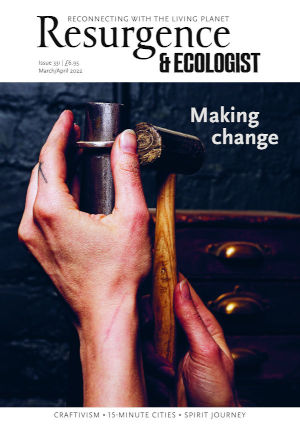With the relentless decline in wild species and habitats across the globe, it seemed that there was already enough to worry about. But Dan Saladino’s new book, Eating to Extinction, presents a whole new cause for concern: the loss of the thousands of varieties of cereal, fruit, meat and other foodstuffs that humans have painstakingly developed since the advent of agriculture some 12,000 years ago.
The losses that Saladino documents are manifold. Gastronomically, it’s crushing to hear what flavours and textures have been sacrificed as our once-diverse diets have been sacrificed on the altar of efficiency and commercialisation. What would mealtimes be like if we still had small farms growing products tailored to local soils and climates, instead of the one-size-fits-all crops that fill our plates today?
Culturally, too, the extinction of variety is devastating. Saladino emphasises just how much diet is wound up with identity, and while it is inspirational to hear of the few tribes and distant villages that have retained a treasured heritage, more often the story is one of permanent extermination. On the few occasions where a culinary tradition has been revived, it is often through happy accident: a mislabelled specimen, or an ancient grain in an old thatched cottage that allows a vanished cereal to be resurrected in fields. It’s hard to imagine that there are many such opportunities left; when it comes to saving this vanishing heritage, we are clutching at straws.
But perhaps the most important point is the loss to future generations and our future selves. The vanishing crops of our forebears are a genetic treasure trove that could contain the adaptations necessary to avoid mass crop failures and starvation in a warming climate, with drier soils, hotter summers and new diseases. Saladino argues that, by consigning this repository of knowledge to history, we have shown an appalling lack of foresight.
Saladino tells the story of food through a series of 34 chapters, each outlining the development and decline of a particular foodstuff, grouped into ten parts, including wild food, cereal, fruit, cheese and alcohol. The effect of this structure can be a little choppy at times, although the narrative is held together by some occasionally recurring characters, such as the Russian botanist Nikolai Vavilov, who trekked the world on horseback in the 1920s and 1930s collecting over 150,000 seed samples and died of starvation in a Soviet prison.
And Saladino’s reporting is impressively thorough. A long-time food journalist for BBC Radio 4, he clearly knows the subject inside out, and he has visited a dizzying array of remote locations to gather the stories within these pages. There is value in giving voice to the people who have nurtured these dying traditions, continuing to grow their products every year against the odds, and I predict that Eating to Extinction will prove a valuable archive of these tales in the years to come.
There are no romantic conclusions here. The vast majority of humans are no longer hunter-gatherers, and there are billions of mouths to feed. But, as Saladino points out, the system we’ve created in place of this older and more diverse array of products is not working: populations are still blighted by hunger and obesity, and the health of the natural world is in terminal decline. Rewinding the clock won’t save the world, but to erase the past entirely would be a dangerous tragedy.






